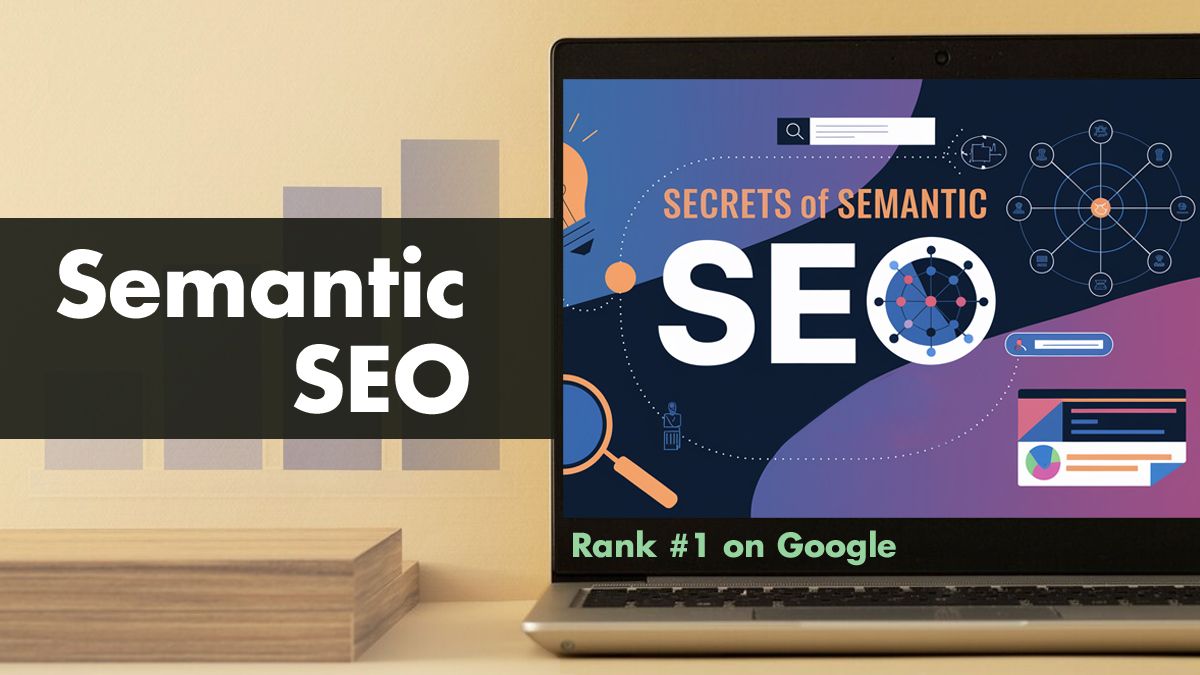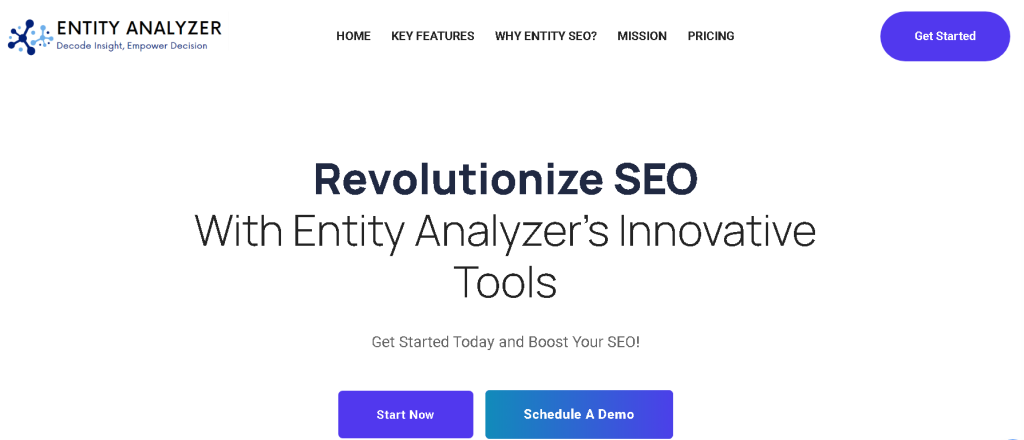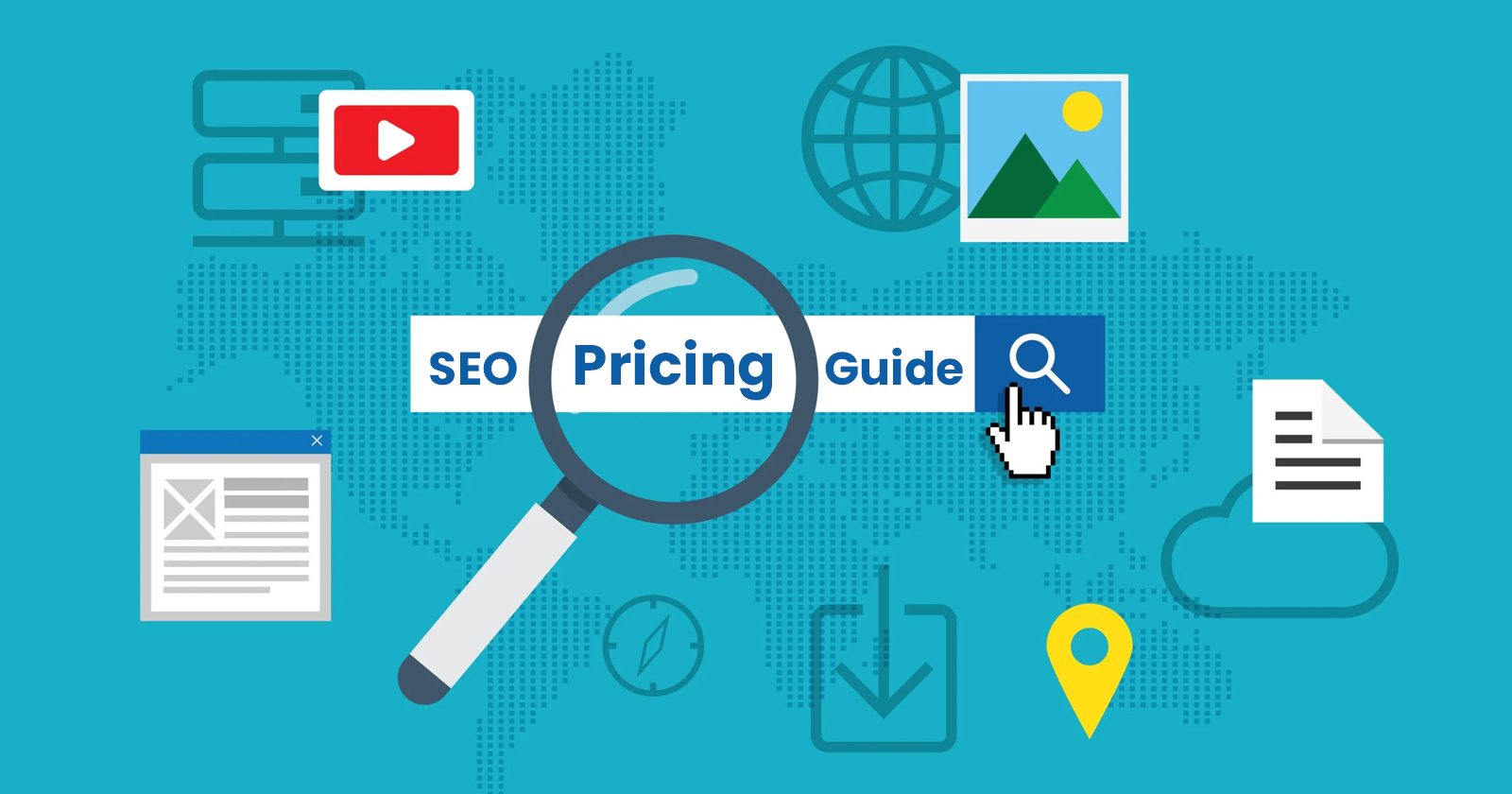Semantic SEO involves shifting from just using specific keywords to improve search rankings. Instead, it focuses more on understanding the context and meaning behind the content. Unlike traditional SEO, which often focuses on single keywords, semantic SEO is about understanding what users really want and how different ideas are connected.
It focuses on improving content so it matches how search engines understand content, using organized data, and producing detailed content that better answers what users are looking for. As search engines evolve , using semantic SEO is important to stay ahead in the online competition.
By paying attention to semantics, websites can become more relevant and easier to find in search results, giving users better and more useful information. In this post, we will look at what semantic SEO means and how to perform it.
Google Evolution SEO Strategies
Semantic Search
Semantic search is an advanced way to find information that goes beyond just looking for certain keywords. It focuses on understanding the context of what people are searching for. This method uses new technology in language processing and machine learning to improve the accuracy and usefulness of search results.
Expert SEO services are crucial for semantic SEO because they ensure your content is contextually aligned with user intent, improving search relevance and ranking in an increasingly AI-driven search landscape.
Semantic search focuses on understanding what a user really wants and the meaning behind their question, instead of just looking for the same words. Traditional search engines usually look at how often certain words appear and if they match exactly to decide what results to show.
However, this method can have some limits and sometimes give results that don’t make sense if the search keywords are unclear or if the user’s purpose isn’t fully shown just by the keywords. Semantic search improves on these problems by understanding what the words in the search really mean.
For example, if someone searches for “apple,” a smart search engine will figure out if the person wants to know about the fruit, or the tech company. This is done by better understanding how keywords work, their similar meanings, related ideas, and what the user needs. Important technologies that support semantic search are:
- Natural Language Processing (NLP): It helps search engines understand and work with human language in a simpler and more natural way. It includes tasks like breaking down text, identifying important parts, and figuring out the emotions in the text to understand its meaning.
- Machine Learning: These programs look at a lot of data to find patterns and predict what users want. These programs keep learning from how users interact with them and the feedback they get, which helps them understand and respond to questions better over time.
- Semantic Markup and Structured Data: They help search engines understand what web pages are about. This extra information helps search engines give better and more detailed results by understanding the meaning of the content.
The advantage of semantic search is that it provides more helpful and personalized search results. By understanding the details and background of a question, semantic search can answer complex queries better and give responses that match what users are looking for.
Also, semantic search makes it easier for users by not needing exact words and letting them ask questions in a more natural and friendly way. This is especially useful in voice searches, where people usually ask questions in complete sentences or in a chatty way.
Knowledge Graph
A knowledge graph is a smart way to organize information that shows how different things, ideas, and their details are related to each other in an easy-to-understand way. It works like a flexible, detailed map of data that combines data from different places, making it easier to find and understand information in a smart way.
Knowledge graphs help search engines, digital assistants, and other AI tools better understand information about the world. This helps them give users more accurate and useful answers. It shows different things, like people, places, objects, or ideas, and how they are connected to each other.
For example, in a knowledge graph, the name “Albert Einstein” could be connected to other names like “Theory of Relativity,” and “Princeton University. ” Each of these shows different parts of Einstein’s life and work. This helps computers understand and answer difficult questions better by using these connections.
Knowledge graphs use tools like semantic markup and natural language processing to help sort and understand large amounts of information. Knowledge graphs help make sense of information better, which leads to more accurate searches, better personal suggestions, and an improved experience for users.
Google Hummingbird
Google Hummingbird, introduced in 2013, was a big update that improved how Google’s search engine understands and interprets questions asked in everyday language. Unlike earlier updates that mainly looked at matching keywords and ranking signals, this one brought in a smarter way to understand searches by focusing on the meaning and purpose behind the words.
This helped Google give better search results by understanding the general idea of a question instead of just looking at single words. For example, if someone searched for “best places to visit in Europe,” Hummingbird’s smart system would look at the whole question to provide information about travel spots, suggestions, and related topics, instead of just showing pages with those exact words.
The update highlighted how important it is to have search that understands everyday conversation better. It can handle more complex and natural questions, and it uses information from knowledge graphs to improve search results. Google Hummingbird was an important update that made searching online easier and more personal.
Also Read: Is Google’s new algorithm Hummingbird is an indication of the start of the end of keyword-based SEO?
Google RankBrain
Google RankBrain, introduced in 2015, is a smart component of Google’s search system that uses machine learning to make search results more relevant. RankBrain is a change from old keyword-based systems to a smarter, AI-powered method.
It helps Google understand tricky questions by learning from how users interact and by constantly improving its methods. It is different from older algorithms because it uses deep learning to look at patterns in search data. Instead of following strict rules, it predicts the best search results based on what people really mean and want when they ask questions. For example, if someone looks for a rare word, RankBrain can make smart guesses about what they might want, even if those exact words aren’t found in the information it has. It can understand different types of questions.
This helps it give better search results, especially for longer, more chatty questions or ones that use unusual phrases. RankBrain is a big improvement in search technology. It makes Google’s search engine better at understanding and responding to how people naturally speak and ask questions.
BERT
BERT, which stands for Bidirectional Encoder Representations from Transformers, is a groundbreaking model for understanding natural language. It was created by Google and released in 2018.
Unlike earlier models that read text in one direction, BERT looks at text in both directions at the same time, meaning it takes into account the words before and after a word together. This two-way method helps BERT understand language better by recognizing the meaning and connections between words in a sentence.
For example, in the sentence “I saw a man with a telescope,” BERT can tell if the telescope belongs to the man or if the man was using the telescope. By understanding these details, BERT makes search engines much better at figuring out and answering tricky, everyday questions.
The model has been very important in helping Google provide better search results and understand what users really want. Its better grasp of context and meaning has raised the bar for how computers understand language. This makes it an important tool for making search engines and other language-driven apps more effective and user-friendly.
Entity Analyzer for SEO
How to Use Semantic Search?
Focus on Topic
To use semantic search well, think about the topic and how it relates to your audience, instead of just focusing on specific keywords. Start by doing detailed research to find the main topics and smaller topics that are important in your area of interest. Make detailed, organized content that thoroughly covers these topics.
It should offer helpful information and answer common questions about them. Use related words and phrases naturally in your writing to make it more relevant without overdoing it. Use structured data, so search engines can better understand your content and how it connects to other information online.
Also, break your content into clear sections with simple headings and subheadings to make it easier to read and find information. This method helps search engines understand the overall meaning of your content and makes it more visible in search results.
By concentrating on subjects and what users are looking for, instead of just single words, you can create more interesting and helpful content. This way, you better serve your audience’s needs and follow how search engines prioritize the meaning and importance of information.
Understand User Intent
Focus on understanding what users want and why they are searching for something. Start by doing detailed keyword research to find out not only the words people are looking for but also the questions they have and the issues they want to solve.
Use tools like AnswerThePublic, and Google Trends to find out popular questions and their different versions. Look at the top results to see what kinds of content do well for certain search terms. Notice the patterns in the types, formats, and subjects of the content that people find helpful.
Create content that directly answers these needs, giving clear and complete answers and solutions. Organize your content in a way that users like best, like by making detailed guides, frequently asked questions, or how-to articles. Also, use everyday language and words that match how people usually ask their questions.
Add links to related pages on your website. This helps search engines see how everything is connected and important. By concentrating on what users want, you make your content more relevant and help it rank better in search results. This leads to a more valuable and enjoyable experience for users.
Answer All Relevant Questions
Begin by researching all the relevant questions about your topic. Use tools like Google’s “People Also Ask,” keyword research tools, and online forums to find a list of common questions that people often ask. After you have your list, organize your content to clearly answer these questions in an easy-to-understand way.
Make separate sections or pages for each important question, and make sure to provide clear and useful answers for all of them. Use different versions of these questions and similar words in your content to match the various ways people might look for answers.
Make sure to use headings to separate each question and answer. This helps people and search engines find your information easily. By clearly marking each part, you make it simple for users to understand your content.
This helps the search engines to understand how the content is set up and why it matters. By answering all important questions in detail, you make the content more useful and relevant. This helps it rank higher in search results and better meet what users are looking for.
Entity Analyzer
The entity analyzer looks for, sorts, and studies important entities in written text. This tool is important for SEO because it helps content creators and digital marketers see how well their content meets what search engines and users are looking for.
How the Entity Analyzer Works?
- Entity Recognition: The main job of the tool is to find and pull out specific words or phrases from the text. Entities are things like names of people, groups, places, products, ideas, and more. The tool looks at the text and finds important things. It then shows this information in a clear way, like a list or a picture.
- Categorization and Classification: After the tool identifies entities, it puts them into specific groups like person, organization, place, event, and so on. This sorting helps us see what kinds of things are there and how they relate to the topic.
- Contextual Analysis: The tool looks at the situation where entities are talked about. It looks at how things connect to each other in the text, helping to show how important they are and how well the content makes sense together. This understanding helps improve content so that it matches what users are looking for.
- Semantic Relationships: Besides recognizing individual entities, the tool finds and shows how these items are connected to each other. For example, it can show how “Elon Musk” is connected to “Tesla” and “SpaceX,” and how these connections help explain the topic.
- Integration with SEO Metrics: The entity analyzer links with SEO metrics and performance information. This helps users understand how the identified keywords and topics match up with successful ones and how they improve the content’s SEO strategy.
How to Use the Entity Analyzer?
- Input content
To use the entity analyzer, make sure your text is clear and organized. You can either paste your text into the tool’s box, or upload a file if the tool allows it. Some tools can easily connect with content management systems for smooth input.
Make sure the content shows what you want to study and does not have any unnecessary formatting that could affect the analysis. Once you add the content, start the analysis to find and sort the important parts in your text.
- Run Analysis
Start the analysis after you enter your information. Click the “Analyze” or “Run” button, based on the tool’s design. The tool will look through your content to find and sort things like people, places, companies, or products.
This process is about finding important names and words, sorting them into groups, and figuring out their meaning and how they connect to each other in the text. After the analysis is done, check the results. This usually includes a list of items, what kind they are, and how they are related to each other.
- Review and Optimize
Check the results to find important entities and see how they fit into your content. Look at the list of recognized groups, what type they are, and how they relate to each other to make sure they fit with your topic and what the user wants.
Find areas where more important details might be needed or where the background information can be made better. Improve your content by adding missing details, making sure words are used appropriately, and strengthening links between related ideas. Change your content based on what you’ve learned to make it more relevant and in line with what search engines want.
- Integrate Findings
To use what you learned from the entity analyzer, begin by integrating your content and SEO plan. Use the identified topics and how they relate to each other to improve internal links. This will help visitors find related content more easily and make it clearer for search engines.
Make your content better by including important topics that were missing or by giving more information where necessary. Change your content creation plan to focus on important subjects and topics that match what users are looking for and help with SEO. Keep checking these results often to make sure your content is up-to-date and improved.
- Monitor Results
Keep looking at the updated reports to see how the use and importance of entities change. See how changes to your content affect how easily people can find it and its ranking among known topics. Check how much better search results, user interaction, and website visits have improved with better content.
Look at the new results and compare them to past data to see how well your changes worked. Keep an eye out for changes in what users want or new trends that could impact the importance of entities. Change your content plan to make sure it meets SEO goals and what users want.
Also Read: Schema Markup for SEO: The Secret Ingredient for Search Engine Optimization
7 Structured Data SEO Tips
Implement Schema Markup
Schema markup is important for helping search engines better understand and show your content. Start by including organized information on your website using schema.org. This markup helps search engines understand important information like product details, reviews, and events.
To implement it, use JSON-LD format. Google suggests this format because it is easy to understand and works well. Tools like Google’s Structured Data Markup Helper can help create the code you need. Make sure the markup is correct and fits the content on your page.
This makes your website easier to find in search engines and can show special information in search results. This will lead to more people clicking on your site and bring more visitors who are interested in what you offer.
Concentrate on Important Schema Types
Focus on schema types that match your content and business aims. Common types are Product, Recipe, Event, and Organization. For online shopping sites, use Product schema to share important details about products, like their price, whether they’re in stock, and what people think of them.
For local businesses, use LocalBusiness schema to show important information like where you are, when you are open, and how to contact you. By choosing the most important types of information, you help search engines understand and show your content correctly.
Keep checking and updating the schema types as your content or business changes. This helps ensure that your information stays accurate and important in search results.
Test Structured Data
After adding structured data, use tools like Google’s Rich Results Test or the Schema Markup Validator to look for mistakes and make sure everything works correctly. These tools check if your schema markup is correct and find any problems that could stop search engines from understanding your data properly.
Frequently check both new and old structured data to make sure they follow search engine rules. Fix any mistakes or alerts quickly to keep your markup accurate. Good testing makes sure that your structured data is identified correctly, which helps you get rich snippets and better visibility in search results.
Monitor Search Console Reports
Use Google Search Console to keep an eye on how well your structured data is doing. The “Enhancements” section shows how well your schema markup is working and points out any problems that Google found. Look at reports to see how your organized data is affecting search results, including how rich results show up.
Check for any mistakes or warnings and fix them if needed. Keep checking these reports to make sure your structured data meets search engine rules and to find ways to be more visible and engage users better.
Regularly Update the Schema Markup
Make sure your schema markup is current to match any updates in your content, products, or services. As your website changes, make sure that the structured data correctly shows what you have to offer right now.
Change the types and properties of the schema to support new features, sales, or updates in business information. Keep checking and updating your markup often to make sure it follows the latest schema.org rules and search engine advice.
Keeping your schema markup up to date helps search engines understand your content better. This can result in rich snippets and other special search features, which can improve how easy it is for people to find and interact with your website.
Optimize for Rich Snippets
To get the most out of structured data, make your content easy to show in rich snippets. Make sure your schema markup gives clear and correct information that search engines can use to make better search results.
For example, use Review schema to show star ratings in search results, or Recipe schema to highlight cooking times and ingredients. Make sure to provide clear and organized information that makes your search listings more appealing and easy to use.
Using better rich snippets can encourage more people to click on your search results, making them more interesting and informative. This can help you get more visitors and increase your visibility.
Use Structured Data for Local SEO
For local businesses, using structured data is very important for getting noticed in local searches. Use LocalBusiness schema to show important information like your address, phone number, business hours, and place on the map.
This information helps search engines show your business correctly in local search results and also on Google Maps. Also, add schema markup for local events, deals, or reviews to improve your local visibility even more.
By improving structured data for local SEO, you have a better chance of showing up in local searches. This can help you get more local customers and make your business more visible in your area.
Internal and External Links for Semantic SEO
Internal Links
Internal links are an integral part of SEO because they help search engines see how your content is organized and related to each other. By connecting the related web pages on your website, you make a network that improves how well each page relates to the topic.
For good semantic SEO, make sure that internal links fit well with the content they are part of. For example, if you have a page about “SEO Best Practices,” linking to related topics like “Keyword Research Techniques” or “On-Page SEO Tips” helps show how these pages are connected.
Creating a clear structure with links inside your website, connecting general topic pages to more detailed pages, helps search engines understand the importance and connections of your content. Using clear and important words in the links helps users understand what the linked page is about and makes their experience better.
Making it easier for users to find related information helps keep them interested, lowers the chances of them leaving the site quickly, and can help improve search engine rankings. Using good internal links helps people find content easily, makes it more relevant, and improves their experience on the site.
External Links
External links, or outbound links, are important for semantic SEO because they help improve the trustworthiness and understanding of your content. When you add links to good, trustworthy websites, it gives extra information that helps search engines understand your content more clearly.
These links show that your content is well-researched and connected to other trustworthy sources. For example, connecting to well-known magazines, research, or expert blogs can make your content more trustworthy and important to search engines.
To use external links well, choose trusted sources that are related to the subjects you discuss. When you connect to good and related websites, you make your content more informative. This gives readers helpful resources and makes their experience better.
Also, adding links to other websites can help you connect with other creators and important people in your field. This might result in them linking back to your site, which can help more people see your site.
It’s important not to add too many outside links to your content because it can make them less valuable. Instead, try to include a few good links that really improve your content and provide helpful information. This will help make your SEO strategy stronger and more effective.
Final Thoughts
Semantic SEO is important for making your content more relevant and effective in today’s online search. By understanding what users are asking and the background of your content, you can work better with search engines and make it easier for users.
To use semantic SEO, you need to know what users are really looking for. This method helps search engines to comprehend, index and rank your content, so users can easily find the most important and useful information.
As search engine bots get better at understanding the meaning of keywords instead of just looking for specific keywords, using a semantic SEO approach will help your content be seen more and attract more interest. Using semantic SEO is important for staying competitive and providing a better and more valuable experience for your audience.
FAQs
What is the difference between semantic and traditional SEO?
Traditional SEO usually aims to improve websites by targeting specific keywords and phrases to ensure that the content matches what people are searching for. In contrast, semantic SEO looks at the bigger picture and the meaning behind what people are searching for, not just matching keywords. It means knowing what users want and making content that explains related topics thoroughly.
Why is semantic SEO important?
It is important because it helps search engines grasp the meaning and context of your content, which results in more accurate search results. This method improves how users feel by giving them better and more relevant answers to their questions. Also, semantic SEO makes your content more noticeable in search results by answering a broader range of related questions.
How can I tell if my semantic SEO strategies are working?
To see how well your semantic SEO is working, keep an eye on the amount of traffic from search engines, how your keywords are ranking, and how users are interacting with your content. Also, check how well certain pages are doing and how they rank for related subjects to see how your changes are working. Check these numbers often and find places where you can make it better.
How can I improve my content for better semantic SEO?
Begin by writing clear and detailed information that covers different parts of your topic. Pay attention to what users want and give them useful information that answers their questions and helps them. Use natural language and different words to make sure your content matches the topic well. Keep your content fresh and up-to-date so it stays important and matches what people are searching for.
What is the importance of user intent in semantic SEO?
User intent is important in semantic SEO because it helps us understand what people want when they search for something. User intent can be broken down into different types, like seeking information, looking for something specific, or making a purchase. By understanding what users are looking for, you can make content that directly answers their needs and questions.

























